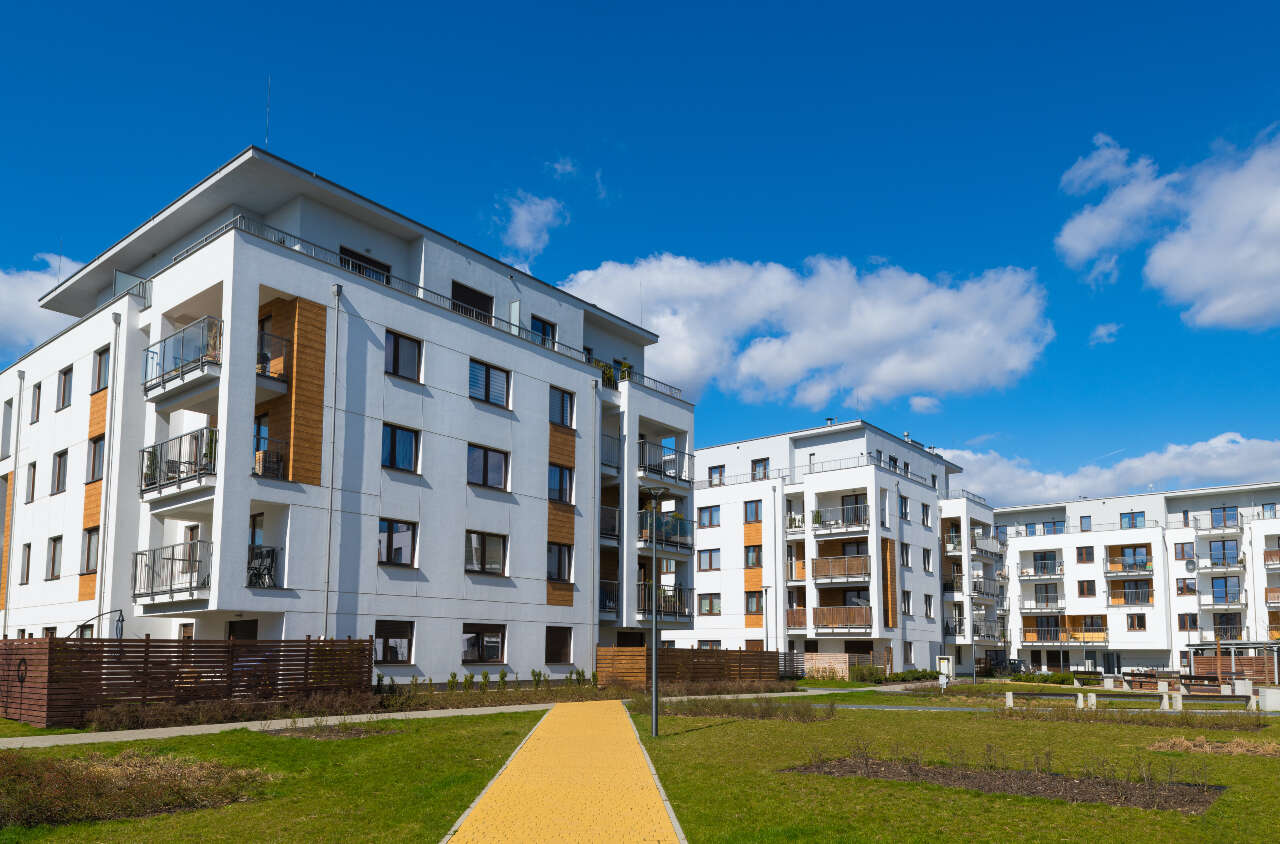
The majority of Britons want to see more houses built in their local area, but only 2% trust housing developers to do it. Can you blame them? There’s a widespread – and not unreasonable – perception that developers’ only interest is making money, and therefore they will simply construct as many ugly, boxy buildings as they can, with little attention paid to either aesthetics or infrastructure.

Boxy buildings are all too common. (Photo by TheHighestQualityImages/Shutterstock)
The aesthetics, however, do matter, although all too often this factor is dismissed as unimportant. Property prices make clear how much it matters to buyers – for example, a home that is close to a listed building in London is worth 10.3% (an estimated £49,770) more than one that is not. People like attractive architecture and urban green spaces, and research suggests that living in beautiful surroundings improves physical and mental health. It’s not enough just to house people in any old building and provide them with the means of survival. They need to live in places that make them happy.
But for much of the 20th and 21st centuries, many architects seemed to have little idea of how to make people happy. I know a family who live on the Alton Estate in south-west London, which was inspired by the designs of the iconic Swiss-French architect Le Corbusier. The development is Grade II listed and was praised by the critic Nikolaus Pevsner as “aesthetically the best housing estate to date”. The family, however, hate it, both for its practical problems and for its appearance.
It’s not only British domestic architecture that has gone through a rough patch. If you look at a building such as the Tour Montparnasse in Paris, completed in 1973, you might wonder if the architects who designed it were motivated by a venomous hatred of other people, or at the very least a hatred of Parisians. This grey block of malice interrupts the skyline in a way that must surely be deliberate: it’s the wrong colour, the wrong height, and entirely the wrong style. Everything about it is jarring.
Many of the public buildings constructed in the postwar period look similarly out of place. The British public tell pollsters that they like neoclassical symmetry, Victorian ornamentation and Georgian fenestration. But what do they get instead? Plain slabs of concrete and skyscrapers covered with so much glass that they’re able to melt cars on the street below.
Yet, we are in desperate need of new buildings both public and domestic, but particularly the latter. If the UK population continues to grow at a rate of around 0.5% – which would add numbers roughly equivalent to a city the size of Cardiff every year – then we need to create more housing.
Here is where political divisions come into play. Well-heeled, home-owning “nimby” (which stands for “not in my back yard”) residents have a vested interest in protecting the value of their properties, and have little to gain when new developments are built in their area. They fear the added burden that might be put on roads and other local infrastructure, and they object to the typically unsympathetic design. “We’re all nimby here,” stated one 75-year-old resident of Amersham, who is the proud owner of a 1924 Bentley, to the Times in June, “we’d love the houses to be built elsewhere.”
For these voters, new housing will never be an attractive proposition. But there are ways of sweetening the pill. The think tank Create Streets is proposing solutions to the housing crisis that go beyond more identikit suburban houses erected on Greenfield sites. Its proposals are orientated around what it calls “gentle density” – a means of creating new urban housing while also promoting efficiency and beauty.
For example, a new policy proposed in a paper by Create Streets should, says its author Samuel Hughes, “upset almost nobody”. Hughes’ idea is to permit the development of mansards: a type of double-pitch roof, traditionally lit with dormer windows, which adds a new floor to the top of an existing building. Mansards were erected by many Georgian and Victorian homeowners as a means of adding extra space – perhaps for an expanding family, or for a self-contained flat – but it is now difficult to acquire planning permission for them, since local authorities are concerned that adding mansards to some buildings and not others could create a “sawtooth” effect.
But even “sawtooth” mansards are prettier than most new buildings because, unlike many other forms of modern development, they are intended to meld seamlessly with period houses while still expanding living space. Although this policy alone would not resolve the housing crisis, it would make a valuable contribution. Many of the buildings suitable for mansards are already multi-occupancy and a new top floor could readily be used by an additional household, and mansards in single-occupancy homes could be used by relatives (perhaps young adults) who would otherwise live elsewhere.
There are other ways of creating gentle density, for instance infilling unused blocks of urban land with developments that imitate nearby historic buildings, something that has been done in the medieval centre of Ludlow. A project in Grand Parc, Bordeaux, has transformed the aesthetic of a block of flats by adding wrap-around enclosed balconies. These developments take advantage of existing urban infrastructure, while also being respectful of surroundings and attentive to the needs of the local people – the opposite of structures such as the Tour Montparnasse.
There needn’t be any contradiction between a desire to preserve urban and rural beauty, and a desire to provide new and desperately needed housing. It is possible to do both, and thus to, as Hughes encapsulates it, “upset almost nobody”.
This article originally appeared on NewStatesman.com.






